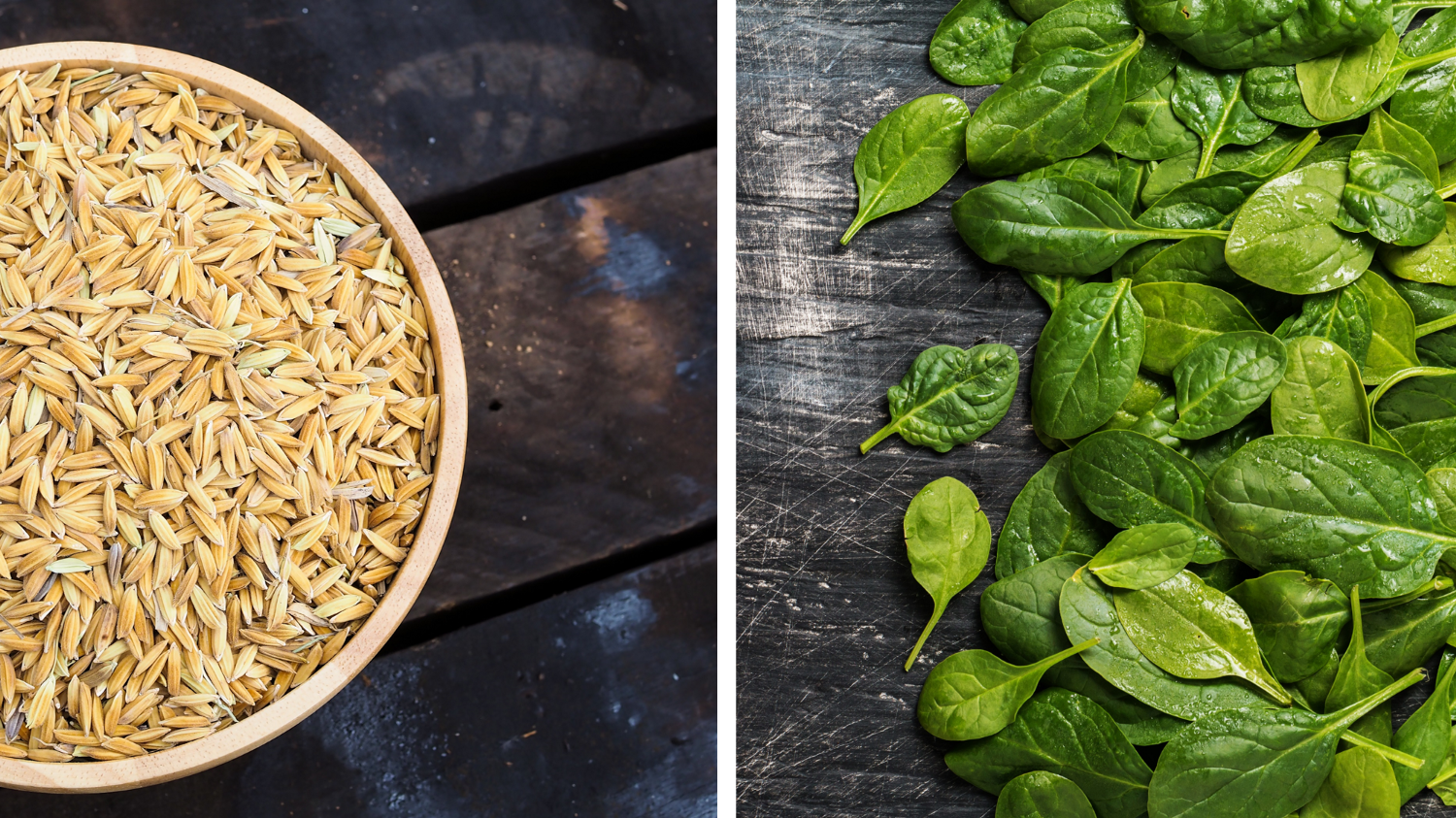I’d like you to take a minute to think about what you’ve eaten over the past few days. What percentage of your meals consisted of leafy greens? What about some type of seed or grain? If your diet is similar to that of most people living in Western societies, my guess is that the amount of seeds you eat drastically outweighs the leafy greens.
I know that there are a lot of people who view seeds like legumes (soybeans, chickpeas, and lentils) and grains (wheat, corn, and rice) as rich sources of protein. Nutritionists and doctors alike stress the importance of getting sufficient protein in our diets, and adding some lentils or a side of hummus to your meal seems like an easy go-to to boost the protein content of your meal.
I don’t think I’m alone in the fact that leafy greens generally aren’t the first things that come to my mind when I think “protein”. However, I recently came across a surprising study into leaves and seeds, which revealed that we may have gotten it all wrong. The researchers examined the protein, vitamin, mineral, and fatty acid content in various seeds (soybeans, chickpeas, lentils, wheat, corn, and rice) and leaves (spinach, broccoli, and duckweed) with surprising results. In every category, leaves emerged as the superior nutritional choice! Let’s dive into why you should go green in your meals:
Leaves contain more complete protein than seeds: A complete protein source must contain several different sub-categories of protein, called essential amino acids. Our body needs nine different types of essential amino acids to function properly. The seeds studied lacked at least one type of essential amino acids, meaning that we must combine seed protein sources to get a complete protein — a good example of this is hummus, where chickpeas (rich in lysine but poor in methionine) are combined with sesame seeds (rich in methionine but poor in lysine) to get a complete protein source.
Leafy greens, however, are complete protein sources. Almost all leafy greens contain a protein structure that features eight of the nine essential amino acids, present at levels above the minimum necessary threshold set by the Food & Agricultural Organization of the United Nations. In fact, the levels of essential amino acids in leafy greens are very near to animal proteins, generally lauded as the best source for complete protein.
Leaves are rich sources of vitamins, while seeds often lack necessary vitamins: The majority of leafy greens contain necessary vitamins, including beta-carotene, thiamine, vitamin C, vitamin E, and vitamin K, among others. Seeds, on the other hand, don’t boast the same roster of vitamins. The USDA Nutrient Database reveals that grains are generally very low in vitamins, while legumes are a mixed bag (peas, for example, are rich in vitamin C but not other vitamins). Compared to seeds, leafy greens generally have at least ten times more of the vitamins listed above.
Leaves have higher concentrations of important minerals than seeds: Minerals like calcium, iron, magnesium, phosphorus, potassium, sodium, and zinc are crucial for a healthy, well-functioning body. Minerals aren’t produced in the body, so we rely on food to provide us with what we need. Almost every leafy green studied contains significantly higher amounts of the minerals above than both legumes and grains. 1 cup of spinach, for example, contains 167 milligrams of potassium, while rice only has 17 milligrams.
It’s important to note that the mineral content of leafy greens varies significantly based on the fertility of the soil and the water used in the growth process. The exact mineral content of the leafy greens on your plate depends on the conditions of fertilization.
Leafy greens contain health-boosting omega-3s, while seeds contain less healthy omega-6s: Omega-3 and omega-6 fatty acids are both essential for our health, but an excess of omega-6s in the body may lead to cardiovascular disease, inflammation, and autoimmune conditions. Currently, the diet in Western societies contain an estimated omega-6 to omega-3 ratio of 16 to 1, meaning that we’re eating an excess of omega-6s and are deficient in omega-3s. Seeds contribute to this imbalance, as they contain a high ratio of omega-6 fatty acid to omega-3 fatty acid. Leaves, on the other hand, offer a more balanced ratio. Corn, for example, has an omega-6 to omega-3 ratio of 32:1, while spinach has a ratio of 0.8:1.
If leafy greens are clearly the superior choice, why do we still eat a seed-heavy diet?
A few factors may contribute to this disparity, including the fact that seeds are much more dense (lower moisture level) than leaves, meaning that we need that for every cup of seeds we eat, it takes four to five cups of greens to get the same weight of solids. As well, leafy greens generally contain oxalates — while they can be detrimental to your health in high quantities, the oxalate content can easily be reduced through specific cooking methods. Finally, seeds can easily be stored and transported, and have a long shelf life, while leafy vegetables tend to go bad soon after harvesting.
Despite these obstacles, filling up your plate with leafy greens instead of seeds is an easy way to get many of the essential amino acids, vitamins, and minerals your body needs to achieve lasting health.
Originally published at deannaminich.com.


